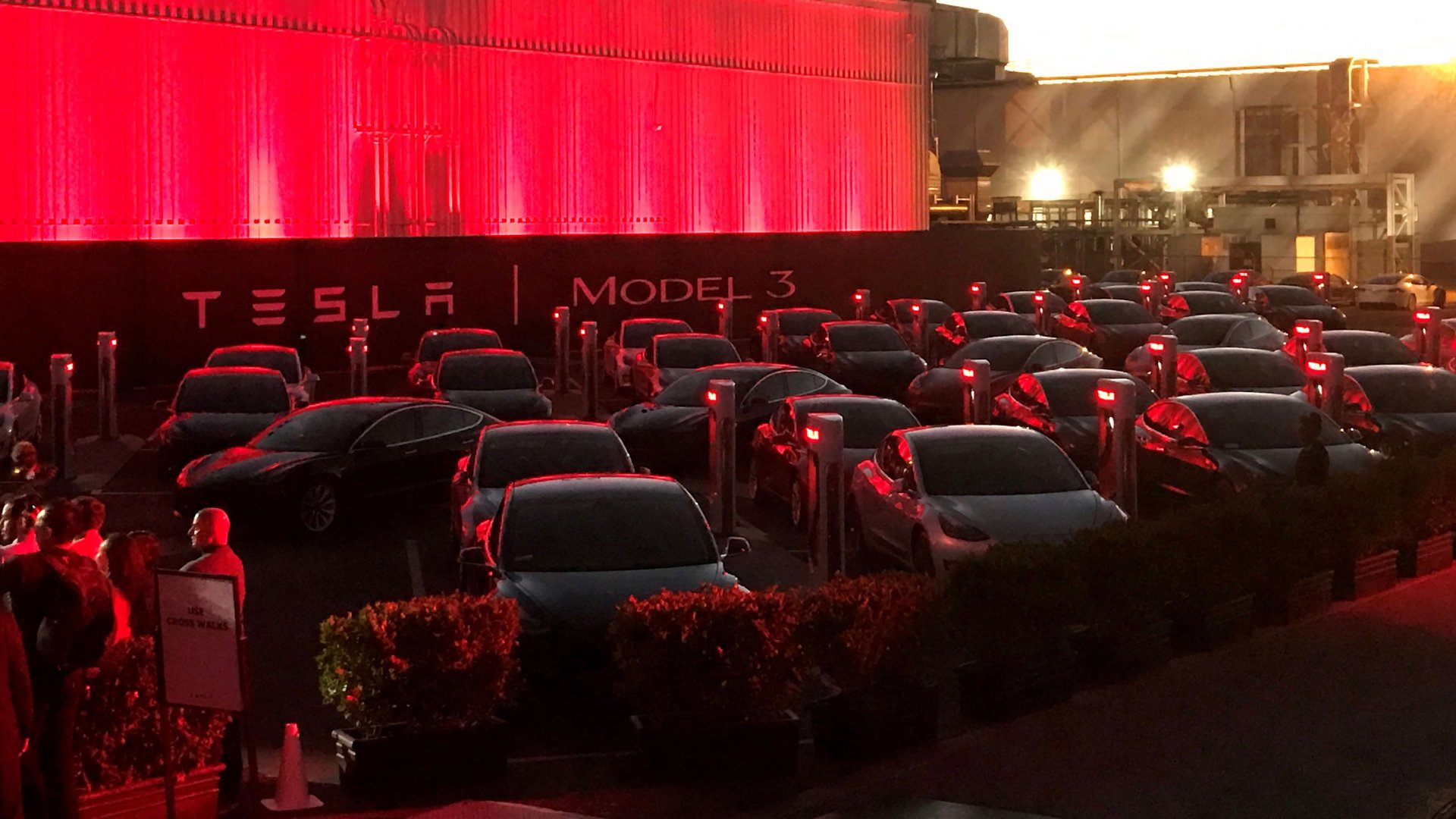Tesla missed its Model 3 numbers again, but doubled down on its June target
The numbers are in, and Tesla fell short of its Model 3 production target—again. The electric carmaker produced 2,020 Model 3 vehicles in the last week of March, short of the 2,500 per week goal it has promised customers and investors this year. But the progress seemed to reassure some investors as the stock climbed 3% over yesterday’s close after the announcement. The company said it delivered 8,180 Model 3 during the first quarter.


The numbers are in, and Tesla fell short of its Model 3 production target—again. The electric carmaker produced 2,020 Model 3 vehicles in the last week of March, short of the 2,500 per week goal it has promised customers and investors this year. But the progress seemed to reassure some investors as the stock climbed 3% over yesterday’s close after the announcement. The company said it delivered 8,180 Model 3 during the first quarter.
The could-have-been-worse news comes as Tesla struggles to hit its production targets for the Model 3, its first mass-market vehicle with more than 400,000 buyers on the waiting list. Originally, Tesla CEO Elon Musk had planned to have 20,000 of the cars rolling off assembly lines by now, but a string of assembly and automation problems made that impossible.
The company put the best possible face on the Model 3 numbers, saying it had doubled weekly production this past quarter after shutting down its factory for upgrades and ironing out production and supply chain bottlenecks. Tesla implied it was turning a corner, with Model 3 production exceeding that of its other two models combined, the luxury Model S and Model X, after just nine months, compared to five years for its other models to reach that level. ”This is the fastest growth of any automotive company in the modern era,” the company said in a statement.
Tesla said it would still hit its production target of “approximately” 5,000 units per week in “about” three months. That’s a sign that Musk thinks the worst of its “production hell,” as he called the ramp up, is behind it. Crucially, Tesla claims that this (somewhat loose) goal will give the company the cash flow it needs to avoid another equity or debt raise this year, beyond its existing credit lines.
In August, Tesla borrowed $1.8 billion from the bond market, but those securities have plunged in value along with the company’s stock. Last week, Moody’s downgraded Tesla’s junk debt based on the probability that Tesla would need to raise as much as $2 billion to meet obligations and avoid a liquidity crisis. Tesla’s announcement today seems designed to quash those fears. The company’s unsecured bonds, due 2025, rose 2% over the previous day after the Tuesday morning announcement.
But Wall Street’s patience is starting to ebb. Tesla remains a cash-burning machine. Its quarterly losses at the end of last year topped $675 million, its largest ever, as it spent furiously to get the Model 3 production back on track. During its 14-year history, the company has never reported an annual profit (some quarters ventured into the black).
Until recently, most investors have been willing to give Musk the benefit of the doubt. The stock kept climbing, exceeding the valuations of carmakers on the scene for more than a century. The optimism has ridden on Musk’s reputation as a sort of a comic book superhero, the Tony Stark of electric vehicles and rockets, as well as Tesla’s genuinely impressive electric vehicle technology that had outpaced every major manufacturer in performance and style.
But that narrative is wearing thin. Chevy’s EVs— the Bolt and Volt— have wowed buyers with their dependability and performance (if not their style). China is dominating the world’s EV production capacity, while the rest of the world has gotten into the game. GM, Ford, Volvo, Nissan, Toyota, Daimler and others have announced all-electric lineups or billions of dollars of new EV investment over the next decade. And, of course, Tesla Model 3 woes have dampened enthusiasm for the company. That’s pushed Tesla’s valuation down from its perch above GM, and every other US automaker.
It all comes at a bad time for Tesla which needs to fund its Model 3 expansion, alongside developing its battery and solar panel ambitions at Gigafactories in Nevada and New York. But investors still seem willing to bet on the upstart if Model 3 production can keep up. Musk has promised an exponential “S-curve” that should see the carmaker hit around 1 million cars per year by 2020, according to Musk during a February earnings call. If not, Tesla’s April Fools joke may no longer seem so funny.